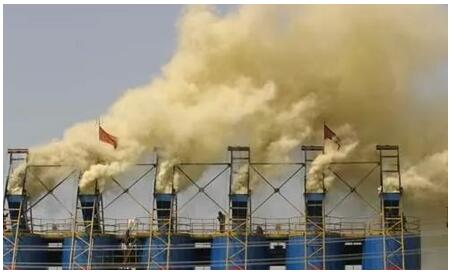Harm of exceeding SO2 in food (1)
Sulfur dioxide is a colorless, pungent gas. People are often exposed to sulfur dioxide in their daily life.
Human exposure to sulfur dioxide
Workers who are exposed to sulphuric acid, sulphate and bleaching, refrigeration and fumigation disinfectants may be exposed to sulfur dioxide through the production process.
Industrial waste gas Smelting sulfide ore or combustion of sulfur-containing dyes can produce sulfur dioxide and air pollution, which is a common industrial waste gas.
The food intake of sulfur, sulfur dioxide, sodium sulfite, sodium metabisulfite and low sulfur dioxide class material such as sodium sulfite, is commonly used in food industry of food additive (their residue in food with sulfur dioxide), if in the food processing process using a similar bleach, will contain sulphur dioxide in food.
Sulfur dioxide exhaust gas
Why do we use sulfur dioxide in food processing
Because sulfur dioxide through the formation of sulfurous acid, sulfurous acid has a bleaching and preservative effect on food. Burning sulfur produces sulfur dioxide, which when met with water forms sulfurous acid. Sulfites react with acids to produce sulfur dioxide, which when met with water forms sulfurous acid. Sulfous acid is a strong reducing agent, can be oxidized coloring material reduction fade, so that food to maintain bright color, but also inhibit the oxidase in food, prevent food Browning. Due to its reducing effect, it can also block the normal physiological oxidation process of microorganisms and inhibit the reproduction of microorganisms, thus playing a role in anti-corrosion. Therefore, sulfur dioxide is a common bleach and preservative used in food processing.





 Facebook
Facebook YouTube
YouTube LinkedIn
LinkedIn Twitter
Twitter